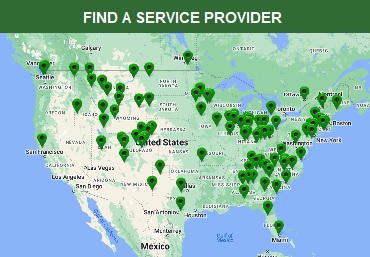All septic systems eventually fail because of problems with the various components like: the toilet, the drain pipes, the septic tank, or the pipes in the drain field. But did you know the soil can be in need of repair, too?
The soil in your system is there to absorb the biological matter in the septic tank after it breaks down into liquid form. But the soil can develop these problems:
- It gets compacted and compressed (from gravity and from walking or driving over it), stopping the flow of fluids through the field.
- It gets gunked up with leftover matter from the septic tank , so that liquids can’t flow through it anymore. (This gunk is called a “biomat”.)
- Problems #1 and #2 also mean that oxygen can’t get into your drainfield to complete the process of breaking down the biological matter from the septic system.
EarthBuster can fix all three of these problems.
The soil (and gravel, if there is any) in your drain field is the biggest part of the entire system. It’s the end of the process, where the pre-treated wastewater (effluent) is finally rendered inert and safe, and enters back into the ecology.
If you’re experiencing a slow drain septic system, your soil might be clogged. When the soil gets clogged up or overly compressed, it can start slowing the septic system down. Thankfully, the soil can be treated and maintained for safe operation—and our soil restoration service can help.
Ironically, the traditional answer to the above question is either to abandon that drain field and build a new one in another spot, or if no other spot is available, to dig up the existing drain field and replace it with all new pipes, gravel, and soil. In other words, until the EarthBuster’s pneumatic soil-fracturing technology for soil restoration came along, there was no solution for the soil at all; one just assumed it was hopeless and started over.
This is why the EarthBuster is so important to the septic industry. It makes it possible to fix what was previously assumed unfixable—the absorption soil. And it does it in a profitable and safe way with immediate results—and at considerable savings to the homeowner when compared to replacing or rebuilding a septic drain field.
To discuss fixing the soil in your drainfield, contact one of our contractors today!


